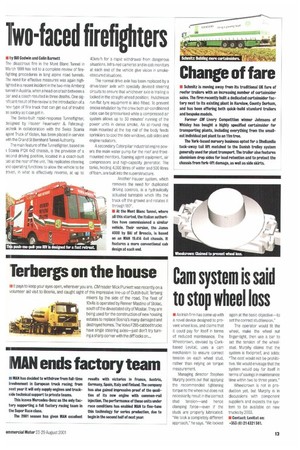Two-faced firefighters
Page 13

If you've noticed an error in this article please click here to report it so we can fix it.
• by BM Godwin and Colin Barnett The disastrous fire in the Mont Blanc Tunnel in March 1999 has led to a complete review of firefighting procedures in long alpine road tunnels. The need for effective measures was again highlighted in a recent incident in the two-mile Arnberg tunnel in Austria, when a head-on crash between a aar and a coach resulted in three deaths. One significant result of the review is the introduction of a new type of fire truck that can get out of trouble is quickly as it can get in.
The Swiss-built rapid-response Tunnelfighter, lesigned by Hauser Feuerwehr & Fahrzeug:echnik in collaboration with the Swiss Scania agent Truck of Kloten, has been placed in service Nith the Grand St Bernhard Tunnel Authority.
The main feature of the Tunnelfighter, based on Scania P124 4x2 chassis, is the provision of a ;econd driving position, located in a coach-built ;a at the rear of the unit. This replicates steering ind operating functions to allow the vehicle to be iriven, in what is effectively reverse, at up to 40km/h for a rapid withdrawal from dangerous situations. Infra-red cameras and in-cab monitors at each end of the vehicle give vision in smokeobscured situations.
The normal drive axle has been replaced by a drive/steer axle with specially devised steering circuits to ensure that whichever axle is trailing is locked in the straight-ahead position; Hutchinson run-flat tyre equipment is also fitted. To prevent smoke inhalation by the crew both air-conditioned cabs can be pressurised while a compressed air system allows up to 30 minutes' running of the power units in dense smoke. An all-round ring main mounted at the top rail of the body feeds sprinklers to cool the side windows, cab sides and engine radiators.
A secondary Caterpillar industrial engine powers the main water pump for the roof and frontmounted monitors, foaming agent equipment, air compressors and high-capacity generator The tanks, holding 4,000 litres of water and 500 litres of foam, are built into the superstructure.
Another Hauser system, which removes the need for duplicated driving controls, is a hydraulically actuated turntable which lifts the truck off the ground and rotates it through 180".




























































































































